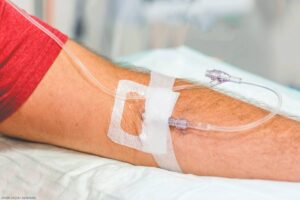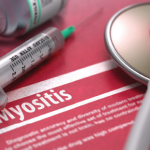 Since the New England Journal of Medicine publication on intravenous immune globulin (IVIG) for dermatomyositis late last year, the data have proved a major lift for patient care, offering crucial new insights into how best to manage patients and clues about how to minimize risks.1
Since the New England Journal of Medicine publication on intravenous immune globulin (IVIG) for dermatomyositis late last year, the data have proved a major lift for patient care, offering crucial new insights into how best to manage patients and clues about how to minimize risks.1
The ProDERM trial results also seem to have opened up a new era of interest in dermatomyositis, leading to an array of work on potential targeted therapies for a condition that has been an understudied area of rheumatology, says Rohit Aggarwal, MD, MS, the lead investigator on the trial for Octagam, the IVIG treatment, and co-director of the University of Pittsburgh Medical Center Myositis Center, Pennsylvania. The trial “set a regulatory precedent that is huge for the field,” he says.
The ProDERM Trial
In the trial, researchers made a rigorous assessment of IVIG, which clinicians had long been using off label for the disease as a second- or third-line treatment, along with immunosuppressants.
Researchers enrolled patients with definite or probable, active dermatomyositis. Subjects could have been treated with a glucocorticoid or other immunosuppressive therapy with no response or have had an adverse event. Subjects could also be receiving concomitant treatment with a glucocorticoid, a maximum of two immunosuppressive drugs or both. These drugs were allowed as long as they’d been started at least three months before enrollment at a stable dose. Biologics, cyclophosphamide and topical glucocorticoids were not allowed. No patients had received a Janus kinase inhibitor.
The primary end point was a Total Improvement Score (TIS) of at least 20. The score was calculated based on the consensus 2016 ACR/EULAR myositis response criteria—using muscle strength, physician’s global assessment of disease activity, patient’s global assessment of disease activity, a health assessment questionnaire, extramuscular disease activity and serum muscle enzyme levels.
Researchers randomized 47 patients to the IVIG group and 48 to a placebo group; 45 of the IVIG patients and 46 of the placebo patients completed the randomized phase. Those in the IVIG group received the drug, a 10% solution at 2.0 g/kg every four weeks. It was typically given in equal amounts over two days, but physicians could extend it to up to five days.
All of the patients, other than those who had a confirmed deterioration, were eligible for the open-label extension phase of the trial through week 40, in which those in the placebo group were switched over to the IVIG group.


